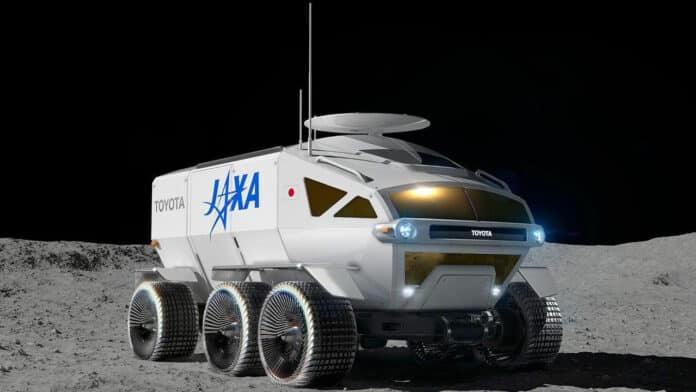NASA Administrator Bill Nelson and Japan’s Minister of Education, Culture, Sports, Science and Technology (MEXT) Masahito Moriyama have signed an agreement to advance sustainable human exploration of the Moon.
Japan will be designing, developing, and operating a pressurized rover for crewed and uncrewed exploration on the Moon. NASA will be providing the launch and delivery of the rover to the Moon, as well as the opportunity for Japanese astronauts to travel to the lunar surface.
NASA’s upcoming program to establish a permanent human presence on the Moon will not only be a scientific expedition but also a car show of sorts. Recently, the space agency has awarded contracts to develop an open off-road vehicle for astronauts to travel around the Moon. However, these vehicles are small, and the driver and passengers will need to wear spacesuits.
On the other hand, the Japanese vehicle being developed by JAXA and Toyota will be an enclosed and pressurized rover. It will enable astronauts to travel farther and conduct science in geographically diverse areas by serving as a mobile habitat and laboratory for the astronauts to live and work for extended periods of time. It will be able to accommodate two astronauts for up to 30 days as they traverse the area near the lunar South Pole.
The new camper van measures 6.0 x 5.2 x 3.8 m (19.7 x 17.1 x 12.5 ft) and will be powered by a hydrogen fuel cell, a clean and sustainable energy source. The addition of solar panels and the ability to recycle wastewater is also a smart move. With a range of 10,000 km, this camper van will be used for exploring the south polar region.
NASA plans to use a pressurized rover on Artemis VII in 2031 and on future missions over a decade-long period. Moreover, a new agreement has been made between NASA and Japan, which will enable the first Japanese astronaut to travel to the Gateway Cislunar outpost. Additionally, two more Japanese astronauts will be part of the first non-American team to set foot on the Moon on a NASA mission.
“The pressurized rover will be a powerful contribution to the overall Artemis architecture as Japan and the U.S. go hand in hand with international and industry partners to the lunar surface and beyond,” JAXA (Japan Aerospace Exploration Agency) President Hiroshi Yamakawa said. “JAXA is ready to assist MEXT and push this forward with our science and technological expertise to establish a sustainable human presence on the Moon.”
Through Artemis, NASA will land the first woman, the first person of color, and its first international partner astronaut on the Moon, make new scientific discoveries, and explore more of the lunar surface than ever before for the benefit of all.
